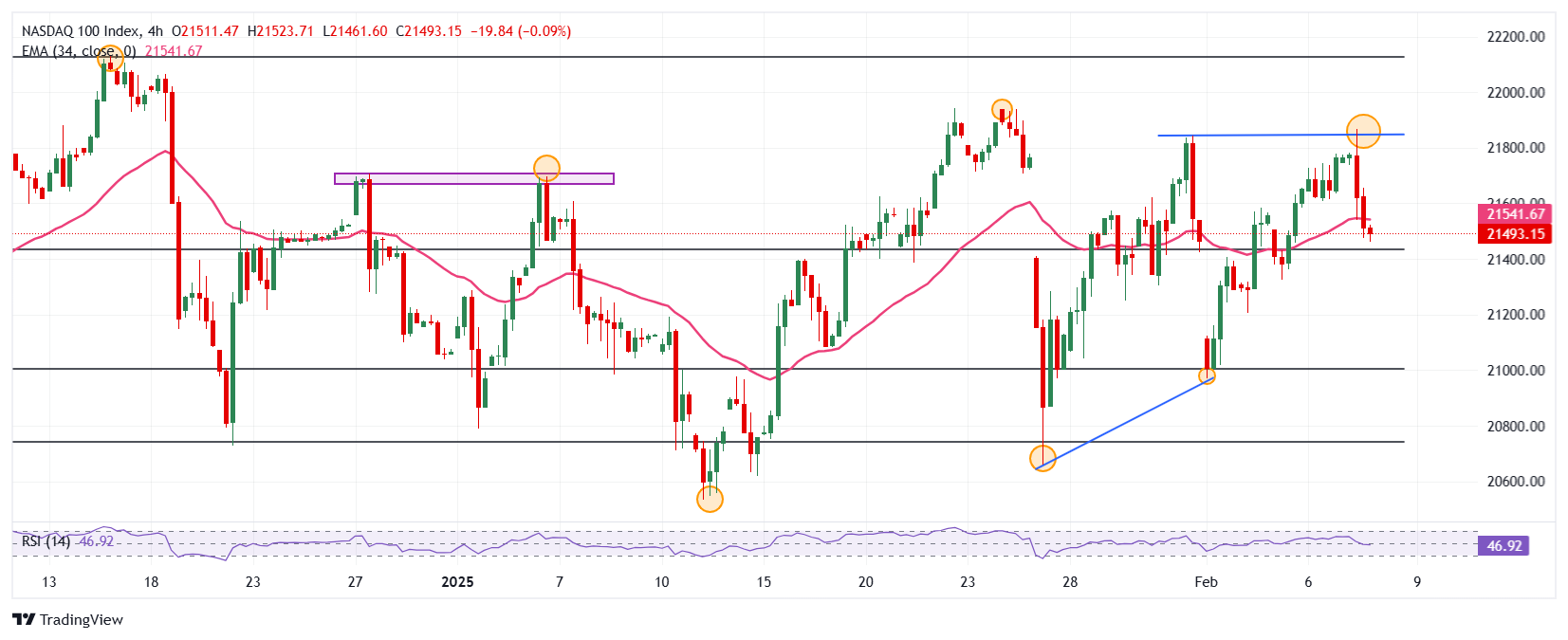- Nasdaq 100 falls 1.22% today, currently operating at 21,490.
- Marvel Technology (MRVL) titles lose 7.06% daily, reaching minimum of February 4 at $ 110.42.
- CDW Corporation (CDW) shares fall 4.14% on Friday, quoting at the time of writing about $ 192.03.
The Nasdaq 100 reacted down from a maximum of the day in 21,867, where it found aggressive vendors that dragged the index and minimum of two sessions in 21,461. Currently, the Nasdaq 100 is quoted over 21,500, losing 1.23% today.
CDW Corporation and Marvel Technologies lead to Nasdaq 100 to minimum of two days
The leading company to provide information technology solutions, CDW Corporation (CDW) loses 4.14% in the day, reaching minimums not seen since January 27 in 191.15 $, signing its second consecutive day down.
Following the bassist perspective, the values of Marvel Technologies (MRVL), 7.06% fall on Friday, reaching minimum of February 4 at 110.43 $.
The Nasdaq 100 ends with a streak of three consecutive sessions upwards, falling 1.22% daily, visiting minimums of two days in 21,490 and retaking the bearish perspective, in tune with the main stock market rates.
Technical levels at Nasdaq 100
The Nasdaq 100 reacted down from a short -term resistance given by the maximum of February 7 in 21,867. The next key resistance is observed in 21,940, maximum of January 24. Down, the important support is found in 20,532, pivot point of January 13.
4 hours of Nasdaq 100

NASDAQ FAQS
The Nasdaq is an American stock exchange that began being an electronic value quoter. At first, the Nasdaq only offered quotes of extraburstile values (OTC), but later also became a bag. In 1991, Nasdaq had grown up to 46% of the entire US stock market. In 1998, it became the first US stock exchange to offer online negotiation. The Nasdaq also prepares several indexes, the most complete of which is the Nasdaq Composite, which represents the more than 2,500 Nasdaq values, and the Nasdaq 100.
The Nasdaq 100 is a large capitalization index composed of 100 non -financial companies of the Nasdaq stock exchange. Although it only includes a fraction of the thousands of Nasdaq values, it explains more than 90% of the movement. The influence of each company in the index is weighted based on stock capitalization. The Nasdaq 100 includes companies that are very focused on technology, although it also encompasses companies from other sectors and outside the United States. The annual average profitability of Nasdaq 100 has been 17.23% since 1986.
There are several ways to operate with the Nasdaq 100. Most of the Stred Betting Retail Corridors and Platforms offer bets through contracts by difference (CFD). For long -term investors, quoted funds (ETF) operate as shares that mimic the movement of the index without the investor having to buy the 100 companies that compose it. An example of ETF is the investment QQQ Trust (QQQ). Nasdaq 100 futures contracts allow specular to the future evolution of the index. The options provide the right, but not the obligation, to buy or sell the NASDAQ 100 at a specific price (exercise price) in the future.
There are many factors that promote Nasdaq 100, but mainly it is the aggregate performance of the companies that compose it, revealed in their reports of quarterly and annual results. American and world macroeconomic data also contribute, since they influence investors’ confidence, which is positive drives profits. The level of interest rates, set by the Federal Reserve (FED), also influences Nasdaq 100, since it affects the cost of credit, which many companies depend largely. Therefore, the level of inflation can also be an important factor, as well as other parameters that influence the decisions of the Federal Reserve.
Source: Fx Street
I am Joshua Winder, a senior-level journalist and editor at World Stock Market. I specialize in covering news related to the stock market and economic trends. With more than 8 years of experience in this field, I have become an expert in financial reporting.







